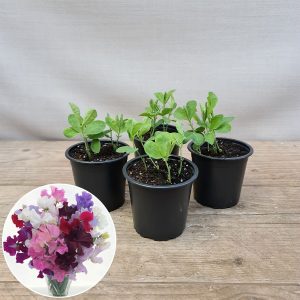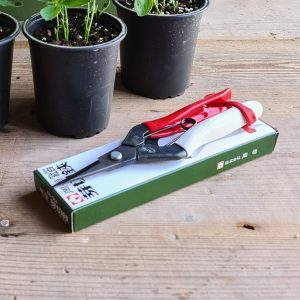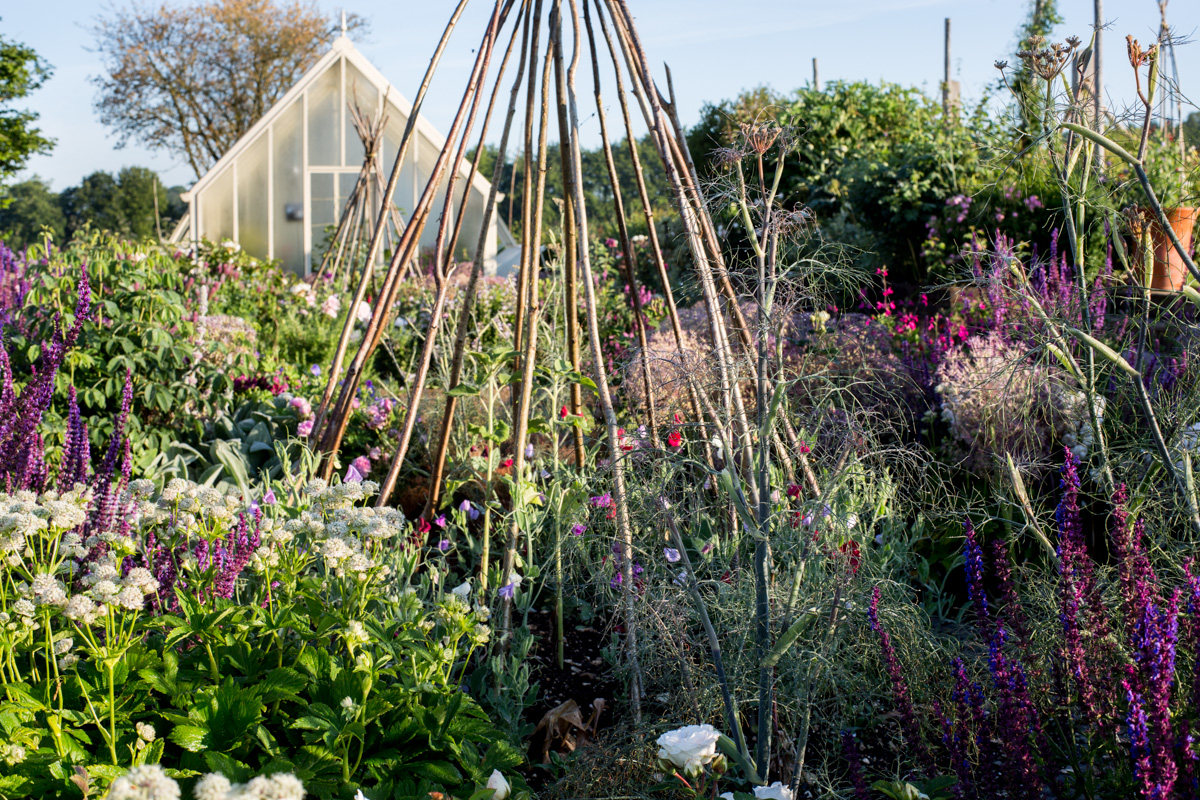We use cookies to make your experience better. Read more
How to Grow the Perfect Sweet Pea

We must give thanks to Sicilian monk, Franciscus Cupani, who on his wanderings in the Sicilian hillsides in the 17th Century came across wild sweet peas and sent seeds to England. Thus began our love affair with these enchanting flowers which have found their way into our hearts, our gardens and also our homes on pottery and on fabrics. Shakespeare named a fairy after them in A Midsummer Night’s Dream and Keats wrote a poem about them so there is really no getting away from sweet peas.
Can anyone grow sweet peas?
Have you tried to grow Sweet Peas before but found they did not grow as well as you had hoped, or perhaps this is your first year? They can be prima donnas to grow successfully but if you give them all the care and attention that a true prima donna requires then all should be well. Our founder and flower farmer Rosebie Morton has been growing Sweet Peas on our specialist Sweet Pea nursery for more than twenty years. Here she shares her tips to get you started.

How much space do I need to grow Sweet Peas?
Rosebie always says that if you have space for a pot then you can grow Sweet Peas. If you are growing in a pot then choose one that is at least 40cm in diameter and 40cm in depth. If you are growing in a flower bed then place your plants about 20-30cm apart. Our Sweet Pea seedling pots are designed to be planted in clusters so they can go straight in the ground or into a pot without dividing them.
When is the best time to sow my Sweet Peas?
If you are able to sow seeds in the autumn you are likely to get earlier flowers and stronger stems but they will need care over the winter in an unheated greenhouse, cold frame or porch which isn’t always possible. Root trainer pots are ideal for establishing deep roots and make easy planting in the spring.
You can sow under cover any time from October right through to April. However, October, November, February and March are best, avoiding mid-winter if you can. If you have space and time to nurture your Sweet Peas then sowing early produces strong, earlier-flowering plants but if you have left it until later then it is still worth giving it a go. Rosebie sowed some for her garden in late April one year and they still flowered.

What is the best way to sow Sweet Peas?
Sweet Peas need a long root run – that means space for their roots to spread out. They do not like root disturbance so Rosebie always recommends sowing the seeds in root trainers or the cardboard centres of loo rolls. Fill the root trainers or loo roll centres with damp peat-free multi-purpose potting compost. Sweet Pea seeds are large and easy to handle. Despite popular belief, Sweet Pea seeds do not need to be soaked.
Push the Sweet Pea seed down about 2-3cm below the surface of the compost.
Leave to germinate on a sunny windowsill or in a greenhouse.
Do not let your seeds dry out. Watering from below is best.
Mice love Sweet Pea seeds so use holly to protect your seeds if needed.
Sweet Peas usually start to sprout in a couple of weeks
For the first time this year we are offering our own Sweet Pea seeds direct from our website. You can shop our Sweet Pea seeds here.
Where is the best place to plant my Sweet Peas?
When it comes to planting, it helps to get any structure you might be using in place and then plant the seedlings around it. Sweet peas are very hungry plants and love lots of manure and good compost dug into the soil before planting to give them a really good start. If you can, choose a reasonably sunny site but they don't need to be in full sun. Contrary to popular belief, sweet peas thrive in cooler conditions.
Should I pinch out or trim off the side shoots?
If you want a bush crop don’t pinch out the side shoots, just let them ramble up teepees leaving the tendrils but beware this will result in a beautiful jungle and lots of short sweet peas. If you are growing Sweet Peas for picking and want long straight stems then trim off the side shoots, leaving the central stem. Rosebie loves to use these Snips for taming Sweet Peas.

Should I take off the tendrils?
For longer stems pinch out the side shoots and take out the tendrils to avoid the tendrils tangling and producing bendy short stems. Don’t be too hard on yourself though because if there’s a heatwave you’ll probably get shorter stems whatever you do as they don’t like really hot weather. If you want a natural display or are pressed for time then you can just leave the tendrils to develop resulting in very bushy and full plants.
How do I encourage my Sweet Peas to produce more flowers?
Sweet Peas are very hungry so Rosebie recommends planting them in good quality peat free compost and incorporating a handful of slow release fertiliser such as Vitax Q4 to kickstart the plants. As soon as you see the first buds appearing, feed weekly with a liquid feed similar to a tomato feed, i.e. high in potassium. Even more important is to prevent your Sweet Peas from going to seed during the flowering season, so make sure you keep deadheading or picking the flowers.
How often should I water my Sweet Peas?
When your Sweet Peas are still seedlings it is important not to let them dry out, so keep the compost moist. Rosebie suggests watering your pots from below by placing them in a tray of water for a while until they feel heavier and the compost on the top looks moist but not waterlogged.
When you plant out your Sweet Peas you will also need to water them regularly. Rosebie suggests giving them a good water every few days (depending on how hot and dry it is) rather than a light drizzle more regularly.
How should I protect my Sweet Peas from slugs?
If you find that slugs are enjoying your Sweet Peas then Rosebie suggests trying copper bands, beer traps or the biological control Nemaslug.
As a final note, it is not cheating to buy Sweet Pea seedlings or plug plants! It can take a lot of the hassle out of growing Sweet Peas and reward you with lots of beautiful blooms this summer.
Varieties are key which is why we breed our own for stem length and scent. Buy seed according to your requirements and take it from there.



